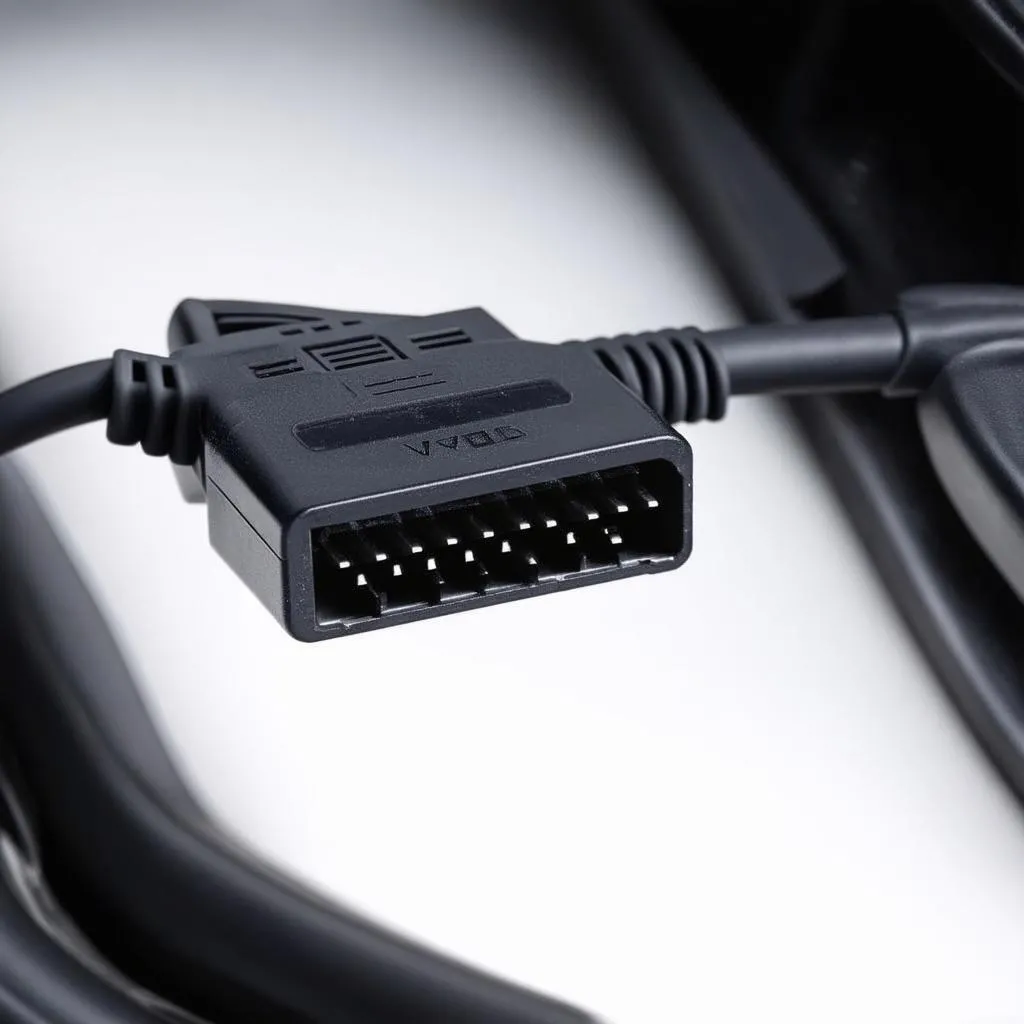Using VCDS software with your Volkswagen can seem daunting at first, but with a little guidance, it becomes a powerful tool for diagnostics, customizations, and maintenance. This guide will walk you through the basics of using VCDS (Vag-Com Diagnostic System) for Volkswagen vehicles, enabling you to understand and address various car issues effectively.
Understanding VCDS Software and Its Applications for VW
VCDS is a diagnostic software specifically designed for Volkswagen, Audi, Seat, and Skoda vehicles. It allows you to access and interact with the various control modules within your car, providing detailed information about the vehicle’s systems, trouble codes, and live data. This software goes beyond simple code reading; it allows you to perform advanced functions like adaptations, coding, and basic settings adjustments. This opens up a world of possibilities, from customizing convenience features to troubleshooting complex electrical problems. With VCDS, you can gain a deeper understanding of your VW’s inner workings.
After this introduction, you might be interested in learning more about our vcds service interval reset.
Getting Started with VCDS: Installation and Setup
Before diving into diagnostics, you need to set up VCDS on your computer. This involves installing the software and connecting the interface cable to your vehicle’s OBD-II port. Ensure you have the correct version of VCDS compatible with your VW’s model year and operating system. Once installed, connect the interface cable to both your computer and the car’s OBD-II port. Turn the ignition on without starting the engine. Launch the VCDS software and select the correct communication port and vehicle model. You are now ready to start exploring the various functions of VCDS.
Diagnosing Trouble Codes with VCDS
One of the primary uses of VCDS is diagnosing trouble codes, which are indicators of potential issues within your car’s systems. To access these codes, select the “Fault Codes” option in the VCDS software. The software will scan the various control modules and display any stored codes. Each code is accompanied by a description, which can help pinpoint the problem area. Once you’ve identified the issue, you can use VCDS to clear the codes and monitor if they reappear.
Performing Advanced Functions with VCDS: Adaptations and Coding
Beyond simple diagnostics, VCDS empowers you with advanced functionalities like adaptations and coding. Adaptations allow you to adjust specific parameters within the control modules, such as throttle body alignment or adjusting automatic transmission shift points. Coding, on the other hand, lets you customize certain features of your VW, such as enabling or disabling daytime running lights or adjusting the behavior of the central locking system. These functionalities offer a high level of control over your vehicle’s behavior and can enhance your driving experience.
Common VCDS Use Cases for VW Owners
VCDS can be used for a variety of tasks, including resetting service intervals, adapting throttle bodies, programming keys, and much more. Understanding these use cases can help you maximize the potential of this powerful tool. You can find more information about immobilizer key programming with VCDS at how to program immobilizer key with vcds. For more detailed information about VCDS features, check out our comprehensive guide on vcds features.
Troubleshooting Common VCDS Issues
While VCDS is a user-friendly tool, some common issues might arise during use. These include communication errors, incorrect coding, or difficulty interpreting diagnostic results. Ensure you’re using the correct version of VCDS, the cable is properly connected, and the ignition is on. For persistent issues, online forums and communities can provide valuable assistance.
Conclusion
Mastering VCDS opens up a new level of control and understanding over your Volkswagen. From diagnosing trouble codes to customizing features, VCDS empowers you to take an active role in maintaining and enhancing your car. While the software might seem complex initially, using VCDS software vw becomes intuitive with practice.
FAQ
- What is VCDS software? VCDS is a diagnostic and customization software for VW, Audi, Seat, and Skoda vehicles.
- Do I need special hardware to use VCDS? Yes, you need a compatible VCDS interface cable.
- Can I damage my car with VCDS? While unlikely, incorrect coding or adaptations can potentially cause issues.
- Where can I find support for using VCDS? Online forums and communities provide valuable resources.
- Is VCDS worth the investment? For VW owners seeking more control over their vehicles, VCDS can be a valuable tool.
- Can VCDS be used on other car brands? No, VCDS is specifically designed for VAG vehicles (Volkswagen, Audi, Seat, and Skoda).
- What are the system requirements for running VCDS? VCDS requires a Windows-based PC.
You can explore additional VCDS resources related to immobilizers at vcds immobilizer. If you’re looking to install OPLM with VCDS, our guide on how to install vcds oplm will provide step-by-step instructions.
Common Scenarios
- Scenario 1: Check Engine Light is on. Use VCDS to scan for trouble codes and identify the underlying issue.
- Scenario 2: Need to reset the service interval after an oil change. VCDS allows you to reset the service reminder indicator.
- Scenario 3: Want to customize convenience features like automatic locking or coming home lights. VCDS enables you to code these features.
Further Questions and Resources
- How to update VCDS software?
- How to interpret specific trouble codes?
- How to perform advanced adaptations and coding procedures?
Need support? Contact us via Whatsapp: +1 (641) 206-8880, Email: [email protected] or visit us at 276 Reock St, City of Orange, NJ 07050, United States. Our customer service team is available 24/7.


